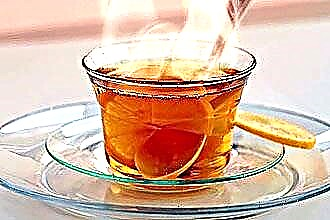There are many treatments for maxillary sinusitis in folk medicine, some of which may seem unusual at first glance, such as hydrogen peroxide or chestnut therapy. However, they often give a positive effect, so they have the right to life. These unusual types of treatment include folk remedies for sinusitis with laundry soap.
What are the beneficial properties of soap
 Sometimes, in addition to being used as a folk remedy for sinusitis, laundry soap is used by pharmacy pharmacists for the preparation of medications prescribed by doctors. The secret is that real soap contains only natural ingredients that have a number of properties that can have a beneficial effect on the skin and mucous membranes of the human body.
Sometimes, in addition to being used as a folk remedy for sinusitis, laundry soap is used by pharmacy pharmacists for the preparation of medications prescribed by doctors. The secret is that real soap contains only natural ingredients that have a number of properties that can have a beneficial effect on the skin and mucous membranes of the human body.
Natural laundry soap consists of:
- saturated and unsaturated fatty acids;
- natural animal fat;
- vitamins E and D;
- white clay (kaolin);
- zinc white;
- pine resin rosin;
- alkalis (potassium and sodium salts).
Fats soften the skin and make it more elastic, rosin disinfects, alkali saturates tissues with microelements, zinc white dries and knits the mucous membrane. In addition, in the complex, these components have an antiseptic, antiparasitic and analgesic effect, as well as irritate the epithelial layer, thereby facilitating the discharge of mucus.
Sinusitis treatment can be carried out using only natural dark laundry soap with a fatty acid content of 72% (category I) and a pH level of at least 11-12.
The preparation of ointments and solutions based on a product containing fragrances, dyes, essential oils, preservatives, tar and other additives is not recommended, as it can cause undesirable consequences in the form of allergies and burns of the epithelium. The only relative drawback of this product is a pungent odor, but it just indicates the naturalness of the product.
This detergent is often used to treat various diseases: acne, acne, cuts, boils, burns. It is also used in cosmetology (hair washing, face masks) and intimate hygiene. In maternity and children's departments of hospitals, disinfection is carried out with soap solutions, which destroy microbes and do not cause allergic reactions in babies.
Indications and contraindications for use
 Traditional soap-based recipes are used only in combination with medication developed by an otolaryngologist. They cannot be used as monotherapy, since the destruction of pathogenic bacteria that caused maxillary sinusitis is possible only with the help of antibiotics.
Traditional soap-based recipes are used only in combination with medication developed by an otolaryngologist. They cannot be used as monotherapy, since the destruction of pathogenic bacteria that caused maxillary sinusitis is possible only with the help of antibiotics.
It is possible to be treated in this way for the chronic and acute form of the disease, with the exception of allergic sinusitis, which the use of active ingredients can only aggravate. All therapy should not last more than two weeks, since alkali and zinc white, with prolonged use, can dry out the epithelium and disrupt the acid-base balance of the nasal cavity.
In some conditions, the use of products based on a household detergent is undesirable due to its active irritating effect on the mucous membrane:
- early age of the child (up to 5-6 years);
- breastfeeding and pregnancy;
- tendency to various allergies;
- allergic rhinitis.
Washing the nose with laundry soap
A soap solution is often used to rinse the air chambers and nasal cavity. This procedure is carried out both during the period of illness and as a preventive measure, to prevent colds, especially in the autumn and spring peak of respiratory diseases. Colds and rhinitis, in turn, are the main reasons why a person can develop maxillary sinusitis.
To prepare the solution, dilute half a teaspoon of household soap grated with small holes in a glass of boiled water with a temperature of at least 60 degrees until it is completely dissolved. With the resulting liquid, wash your nose every 3 hours using a regular syringe (medical pear). If the patient is uncomfortable when water is poured into his nostrils, then you can simply dip your finger in soapy water and rinse the walls of the nasal passage, or carry out the same manipulation with a cotton swab or cotton swab. A tingling sensation is possible, but can be tolerated without much effort.
It is also known that in the hospital, soapy water is used for more serious irrigation, which is known as "cuckoo". During this procedure, the solution not only washes the walls of the nasal cavity, but also flows directly into the affected accessory pockets, producing an antiseptic and thinning effect. To do this, dissolve 10 g of soap shavings in 50 ml of warm water. Rinse daily for no more than a week. However, this technique is not generally accepted, the decision on its appointment to children and adults should be made only by a specialist, taking into account all possible risks. As a rule, saline solutions are used when carrying out the "cuckoo".
Applying a soap-based ointment
The most famous and widespread method of this type of treatment is sinusitis ointment with laundry soap. It should be applied only to well-cleaned walls of the nasal passages so that there is direct contact of the drug ingredients with the epithelial cells, without a layer of mucus. Before using the ointment, rinse the nose with water or any suitable solution (saline, with herbal decoctions) and blow your nose.
The most commonly used recipe for a medicinal ointment, which is recommended by almost all resources in traditional medicine:
- 30 g of 72% laundry soap crushed into small shavings;
- 10 ml of vegetable oil, preferably extra virgin olive oil, although in the absence of it, refined sunflower oil is also suitable;
- 10 ml freshly squeezed onion juice;
- 10 ml fresh or steamed honey;
- 5 ml of ethyl alcohol or 10 ml of ordinary white vodka with a strength of 40 degrees;
- 10 ml of goat's or cow's milk.
It is all brought together, mixed and placed in a water bath until the shavings are completely dissolved. Stirring regularly will help to make the consistency of the preparation more uniform and easier to use. The ointment can be stored in the refrigerator for several days.
Pre-prepared cotton wool turundas or cotton pads twisted into a tube are dipped into the cooled resulting mixture and inserted into the nasal passages for 15 minutes three times a day if sinusitis is in an acute form. If we are talking about chronic sinusitis in remission, then such a remedy can be used once every 7-10 days to prevent exacerbations of the disease. It is not necessary to stick the turunda deeply, it is enough to insert it 2 cm into the nostril. The result of the action of the active components will be the active release of purulent exudate.
 Sometimes the patient begins to burn or sneeze from tissue irritation, this is normal, but if the reaction intensifies or additional alarming signs appear (red spots on the skin, itching), then the procedure must be urgently interrupted, rinse the nose with water and consult a doctor.
Sometimes the patient begins to burn or sneeze from tissue irritation, this is normal, but if the reaction intensifies or additional alarming signs appear (red spots on the skin, itching), then the procedure must be urgently interrupted, rinse the nose with water and consult a doctor.
To enhance the effect of the drug, a few minutes before laying the mixture, it is recommended to drop 2 drops of freshly squeezed red beet juice into the nostrils. It promotes the liquefaction of mucous masses and a more complete perception of subsequent treatment.
Other recipes for sinusitis ointments based on laundry soap
When deciding on an ointment for sinusitis with laundry soap, the recipe is selected based on the recommendations of the attending physician and the symptoms of the disease that appear. Ointments are multicomponent, therefore, when selecting accompanying ingredients, one should focus on the amount of mucus to be separated, the degree of nasal tissue congestion and damage.
Several easy-to-cook folk recipes:
- With thick and poorly coming out snot, cyclamen ointment helps. The composition includes in equal proportions fresh juice of cyclamen root, finely crushed soap, freshly squeezed and strained onion juice and butter (or ground lard). All ingredients are mixed and infused for a day in the refrigerator, after which the mixture is diluted with an equal amount of water. Liquid ointment is instilled into each nostril, 3 drops 2 times a day.
- White from one raw chicken egg is beaten and mixed with a teaspoon of finely grated laundry soap; for a stronger disinfecting effect, you can add a pinch of baking soda. The ointment turns out to be thick, it is put into the nasal passages on turundas for 10 minutes daily until the patient's condition improves.
- If sinusitis is neglected, then juices of celandine, black radish, aloe, soap and honey are mixed. The mixture is heated to a boil and infused for a day. It is applied every day for 15 minutes.
- 20 g of soap, 10 ml of alcoholic propolis tincture and beet juice, 5 ml of unrefined vegetable oil, bring to a boil in a water bath and cool. Used daily.



